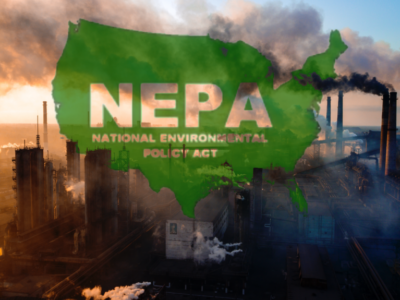Judicial Review After Loper Bright
We used to have the Chevron test? What test do we have now?
The Supreme Court’s overruling of Chevron set off a fiery debate. That’s an important debate to have. The Court isn’t going to change its mind any time soon. Lawyers need to deal with the new reality, which means they need to understand the new test that replaced Chevron.
As I see it, there are two steps to statutory interpretation under Loper Bright, with an additional preliminary step:
Step 0. Is this an exceptional situation?. If a regulation was upheld in the Chevron era, that decision remains valid statutory precedent. In addition, the court doesn’t defer to the agency at all in a case involving a “major question.”
Step 1. Was there a delegation?
The court must first determine whether Congress delegated authority to the agency to interpret the statute. If so, the agency’s interpretation is binding so long as it is within the limits of Congress’s delegation. Until now, Congress didn’t necessarily have reason to be explicit on this score, although some statutes do expressly give the agency the power to define terms used in the statute. However, delegation doesn’t have to be explicit. Congress can also delegate authority by authorizing the agency to “fill in the details” of the statutory scheme or by using very broad terms much as “appropriate” or “reasonable,” leaving it to the agency to provide workable definitions.
As an example of a statutory delegation of authority, the Court cites a provision in the Clean Water Act, 33 U. S. C. §1312(a). The Court summarizes that section as saying that EPA can act “whenever, in the judgment of the [Environmental Protection Agency (EPA)] Administrator . . . , discharges of pollutants from a point source or group of point sources . . . would interfere with the attainment or maintenance of that water quality . . . which shall assure’ various outcomes, such as the ‘protection of public health’ and “public water supplies.'”
This actually pretty typical language in environmental statutes,, such as section 202 of the Clean Air Act, which EPA has used to limit carbon emissions from cars. Thus, in defending its vehicle emission limits, EPA should be able to claim a clear delegation from Congress to act within the bounds of the statutory language. If it has acted within the scope of the delegation, the question will then be whether the agency gave a reasoned explanation of how it used its statutory discretion.
Step 2. Weighing the agency’s view.
Where there has been no congressional delegation of authority to interpret a statutory provision, the court makes its own independent interpretation of the statute but gives respectful consideration to the agency’s view. The agency’s view gets particular weight if:
(a) The agency interpretation was adopted soon after the statute was passed.
(b.) The agency’s view has been consistent over time.
(c) The issue is technical such as an issue involving scientific expertise.
This isn’t Chevron, but courts deciding cases won’t find the new approach entirely unfamiliar either.
Reader Comments
2 Replies to “Judicial Review After Loper Bright”
Comments are closed.







Dan, university scholars have two jobs to do with the greatest sense of urgency:
1. Control global warming to protect quality of life for our newest generations.
2. Prevent republican politicians and justices from overthrowing our democracy and replacing it with an autocracy.
Are our university scholars capable of making the right things happen, implementing solutions in time?
skidmore, baby.